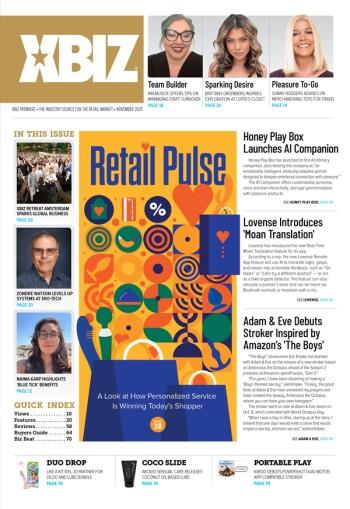Change is all around us; it's pretty much the only thing that's constant, especially in advertising. The same goes for the different types of billing for advertising — there’s always something new that promises to be the “next big thing.”
Something new that’s popped up is CPMv billing, which has led to a myth that somehow this makes the traffic higher quality or more valuable simply because the advertiser is only being billed for the “viewable impressions.”
In the end, adult advertisers are looking to earn a profit by buying advertising for their product or service and that is done by using effective marketing and bidding properly on the right sources for them to drive a return on investment.
There may be gains for certain advertisers, but the majority of affiliates and media buyers are just going to pay a higher price for less impressions. There is simply no gain in quality or value, and I’ll tell you why.
I’ve been in this industry now for more than 15 years, and have been selling advertising personally since 2002.
I started JuicyAds, the Sexy Advertising Network in 2006, but we have been selling advertising per click (CPC) and per impression (CPM) for many years now.
The bottom line of buying or selling any advertising is that each website is worth a different value due to its source of traffic and its concentration of interested buyers, as well as many other factors.
In the end, adult advertisers are looking to earn a profit by buying advertising for their product or service and that is done by using effective marketing and bidding properly on the right sources for them to drive a return on investment. There is very little to no “branding” done by most adult website advertisers, be cause a lot of it is done by affiliates and other marketers who are seeking a direct result from their marketing spend.
I’ve never been a big fan of CPM model, and JuicyAds has always been a results- and performance-based network that doesn’t rely heavily on publishers shoving banners at the bottom of their websites and collecting revenue for non-clicked ad space. Our best publishers are the ones who place our ads well in spaces that will drive eyeballs towards the offers.
The basic concept of CPMv is that advertisers only purchase the impressions that are visible to the visitors. That means, that if they scroll over and actually “engage” with the ad, that this creates higher value for that view. The argument goes, that if 25 percent of visitors never see your ads, that the Advertiser is being “ripped off” on their media buy. The CPMv “solution” is to not count those impressions, and to not sell them.
If the advertiser is receiving 10 sales per day from their media buy, and now they are paying 25 percent less for that buy. Let’s say that the advertiser earns $1,000 from those sales and they just improved their ROI — awesome! Sounds great for the advertiser, right? He does save 25 percent at the time of “switching” from CPM to CPMv, but don’t be fooled, that’s just the start.
The immediate effect to the publisher, on the other hand, is they are now not being paid for those impressions and in fact, at that moment actually earning 25 percent less for their traffic (sounds pretty shitty, right?).
The response to this is that those impressions were not quality to begin with (and that is totally true). If those non-viewed impressions are removed from the website’s inventory, only the remaining 75 percent “higher quality” advertising views are being sold.
So Juicy Jay, why is CPMv not a revolution for adult? Because the value of the traffic has not changed. The amount (10) and value ($1,000) of those sales being generated from that traffic is exactly the same as it was before.
The website is still delivering the same traffic to the same ads, and generating the equal 10 sales and the equal $1,000 per day as before. The only difference is the advertiser is now “paying less” for them. This is the critical false logic, because it does not work in an open bidding environment.
Think of the flaw in this as if you divorced your ex-wife and got a hotter new girlfriend, only to find out it was the exact same person with plastic surgery to artificially look better. Nothing changed, it’s just an illusion of different packaging. On the outside they may be better looking but the truth is she’s still that same shitty person you divorced. Undoubtedly, both situations are not going to end well and here’s why.
The remaining 75 percent viewable impressions are now worth more per impression. The previous happy advertiser wakes up with a hangover the very next morning (after parting because his ROI was so awesome) to find someone else is bidding higher on the traffic he just snagged that 25 percent discount on. Dammit!
Now the advertiser has to repeatedly increase his bid, to edge out of the other buyers to keep his ads on that website. The result? The once happy advertiser is now paying more to retain those 10 sales and $1,000 per day. Since the spot is still worth what it was before, another advertiser will pay that amount for it (because that’s simply what it’s worth).
In the end, the publisher earns the same on CPMv that they were earning before on CPM. The world makes sense again.
The math is simple. If a space is worth $1,000/day in sales and it has 1 million “CPM-based” impressions (including both viewable and non-viewable impressions) those impressions are worth a bid of $0.10 per CPM. If you take those same 1 million impressions on “CPMv basis” and remove the 25 percent that are not viewable, that traffic is worth a bid of $0.13 per CPMv: $1,000 / 1,000,000 (10,000k) = $0.10 $1,000 / 750,000 (7,500k) = $0.133.
There is value in the CPMv concept for gauging the value of a website’s traffic and specific advertising spots. Comparing viewable impression data from various websites allows a “comparable shopping experience” but it has absolutely no effect whatsoever on delivering higher quality traffic.
There would be benefit to advertisers who rely on branding, but as I said before, the majority of adult marketers are results driven and don’t rely on branding efforts.
In many cases it’s just an excuse for a network to claim higher quality to attempt to charge more to advertisers for the same results and fool publishers into thinking they will earn more. The really scary part? A shady CPMv network has the potential to skim viewable impressions from unwitting publishers, who don’t know how many “viewable” impressions they actually have.
At the end of the day, CPC, CPM, CPMv or whatever the billing method, there will always be smart advertisers looking to pull out their wallets and buy great advertising spots from trusted sources. Happy bidding!
Juicy Jay is the CEO and Founder of JuicyAds, and can be found on Twitter @juicyads and on Facebook.com/JuicyAds.






